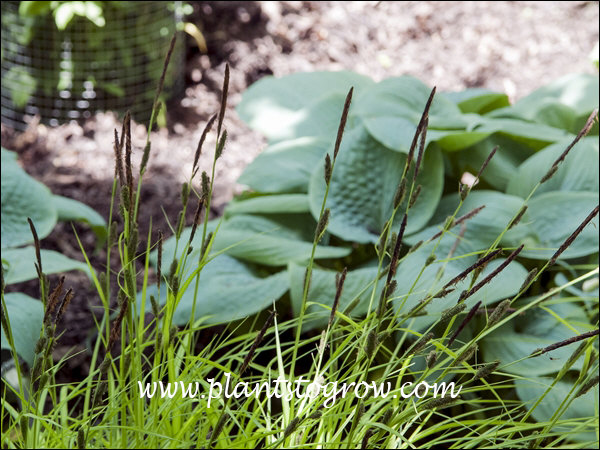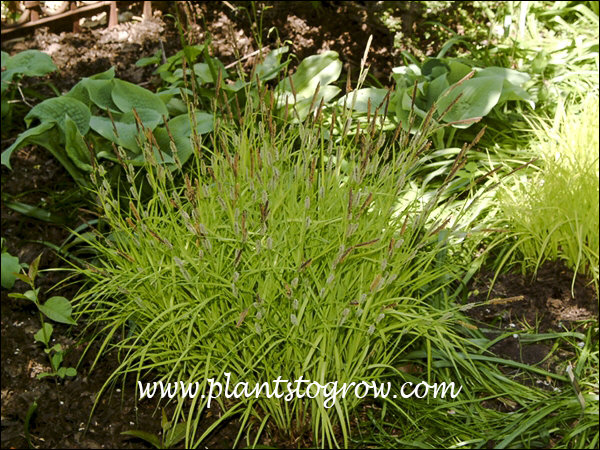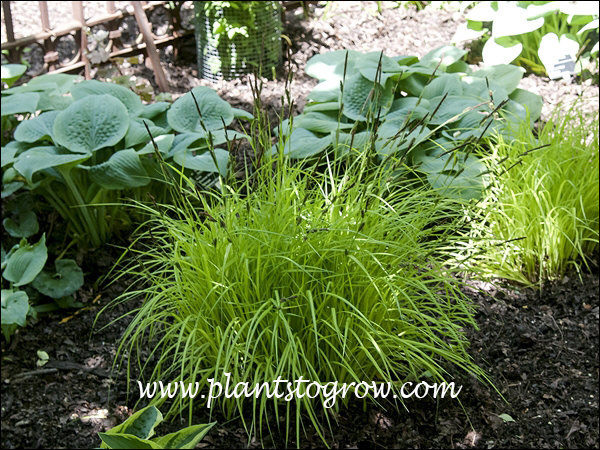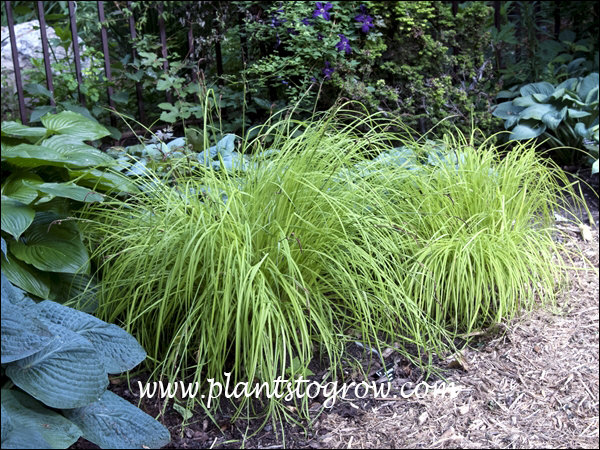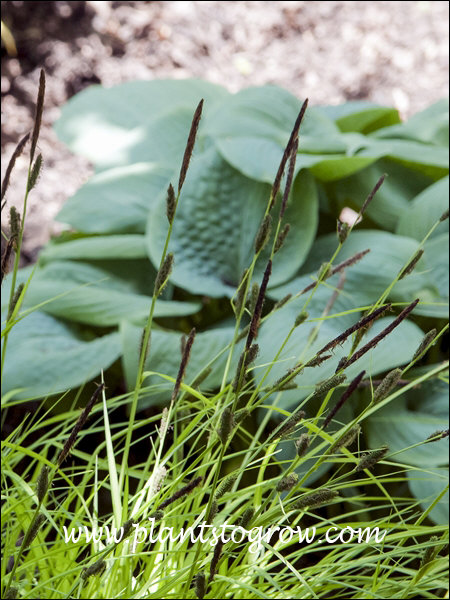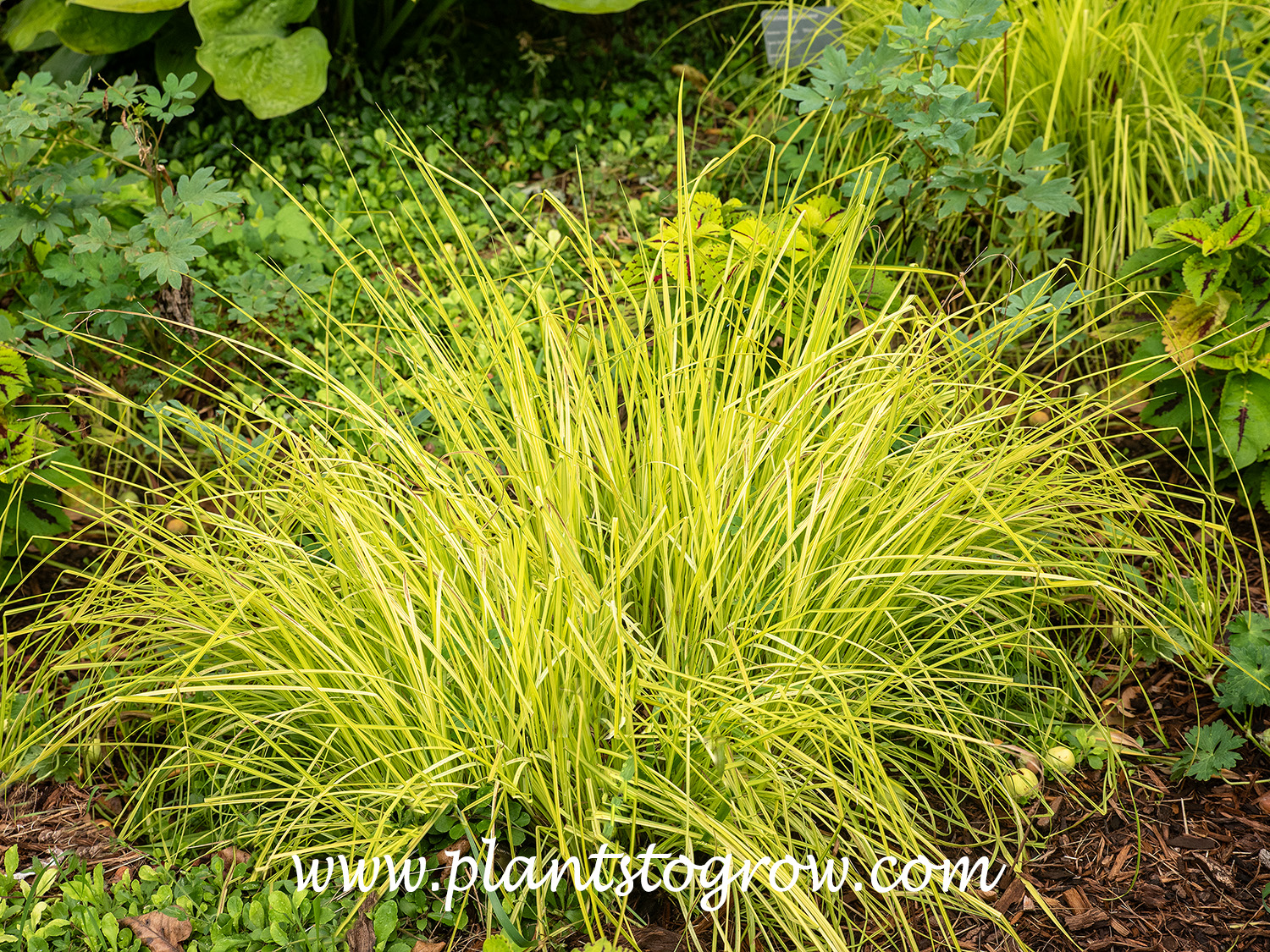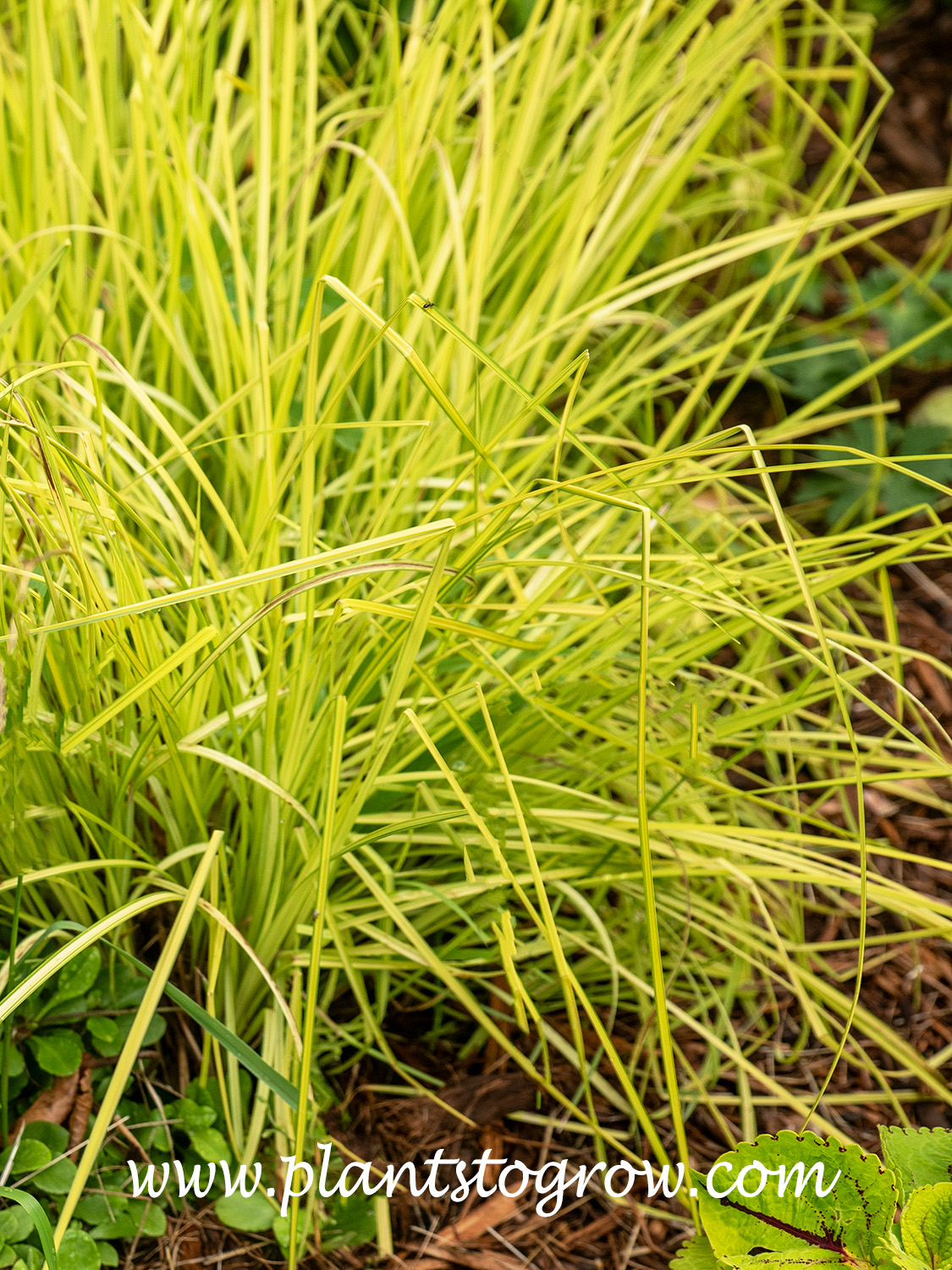| Description | Bowles' Golden Sedge (Carex elata Aurea) is a bright yellow leaf tuft-forming sedge that prefers moist sites. |
|---|---|
| Pronunciation | (KAIR-ex)(eh-LAH-ta) |
| Plant Type | Perennials Hardy, Grass Ornamental |
| Hardiness Zone | 5-9 |
| Sunlight | It needs some sun to bring out the golden color, but it will burn if in full sun. |
| Moisture | The plant must be kept moist and wet. Plants in dry soil are much smaller, and the foliage drys out. |
| Soil & Site | moist to wet |
| Leaves | The leaves are bright yellow in the spring through early summer, fading in the summer and returning to a nice color in the fall. The plant forms a clump of 1/8 to 1/2-inch wide leaves that can be sporadically striped with bright green lines. |
| Dimensions | forms tufts of about 1-2 feet by 1-2 feet |
| Propagation | division |
| Native Site | Native to northern and eastern Europe. |
| Cultivar Origin | Discovered by plantsman and garden writer E.A. Bowles, Carex elata ‘Aurea’ was found in the Norfolk Broad, a wetland waterway in eastern England. |
| Misc Facts | The plants in this section were listed as C. elata aurea at the botanical garden. Probably the same plant as Bowles Golden Sedge? |
| Author's Notes | I saw this plant at a nursery. The plants were stunning in the containers, growing under optimum growing conditions. However, I found this beautiful foliage hard to maintain in the garden. |
| Notes & Reference | #222-The Encyclopedia of Grasses for Livable Landscapes (Rick Darke), #274-Site Authors' observations and growing experiences, Hofman Nursery website |

Cart
